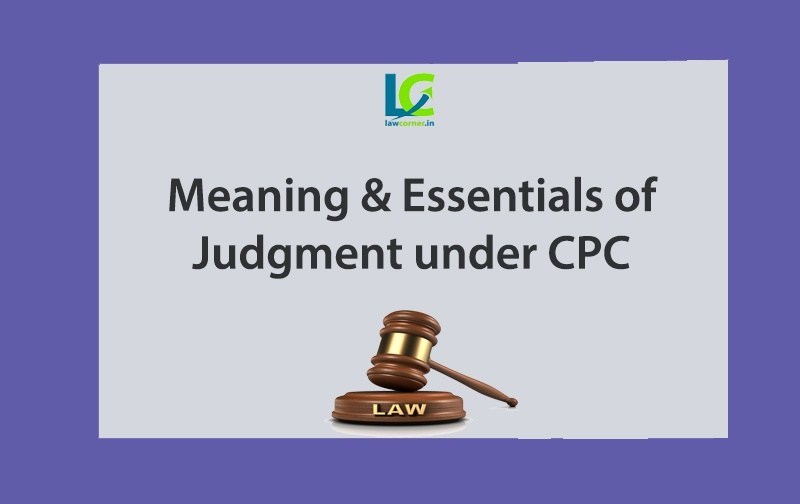
Week-3 | Judgement
Judgement
The term Judgement is defined in Section 2(9) of the Code of Civil Procedure, 1908. A judgement contains facts of the case, the issues involved, the evidence brought by the parties, finding on issues (based on evidence and arguments). Every judgement shall include a summary of the pleadings, issues, finding on each issue, ratio decidendi and the relief granted by the court. On a daily basis, numerous judgements are pronounced and various cases are disposed of. Judgements play a very important role in the working of our judicial system because they act as precedents for cases to come in the near future. A judge in the judgement pronounced, always states the reasons for such a decision.
Pronouncement of a judgement
The word pronouncement means to make an official public announcement. Pronouncement of a judgement means that after the hearing is completed i.e. after the Court has heard the pleadings of the parties, the judgement shall be announced by the Judges in an open Court, either at once or at some future day, after providing due notice to the parties or their learned counsels.
If a judgement is not pronounced immediately then it must be pronounced within 30 days from the date of the conclusion of hearing. However, sometimes it so happens that due to exceptional and some extraordinary reasons like a bank holiday, strike or some other situation it may be delivered within 60 days from the conclusion of the hearing. It is not mandatory for a judge to read out the whole judgement and it would be enough if only the final order is pronounced. The judge shall put the date on which the judgement was pronounced along with his signature. Rule 2 Order XX of Code of Civil Procedure, 1908 provides a judge with the right to pronounce the judgement which is already written but is not pronounced by his predecessor.
After the Amendment Act of 1976, the time limit was provided between the hearing of the arguments and the pronouncement of the judgement. Prior to this amendment no time limit was provided as such. Such a time limit was provided because there was indefinitely continuous imposition from all over India.
Copy of the judgement
Once the judgement is pronounced the copies of that particular judgement should be immediately made available to the parties on payment of costs as specified, by the party applying for such copy, of such charges as may be specified in the rules and orders made by the High Court (H.C.) Such a rule is specified in Order XX Rule 6-B of the Code of Civil Procedure, 1908.
Contents of the judgement
According to Rule 4 Order XX of Code of Civil Procedure, 1908:
Judgements of a Court of Small Causes are satisfactory if they contain the points for determination and the decision thereon.
Judgments of other Courts shall contain:
- Summary of the pleadings which is a concise statement of the case;
- Issues which are the points for determination;
- Findings on each issue and the decision thereon;
- Ratio decidendi (reasons for such a decision); and
- The remedy, which is the relief granted.
Alteration of a judgement
Once a judgement is dated and signed by the judge it can only be altered or amended if:
There are arithmetical or clerical errors. (clerical errors refer to the errors made by clerks and arithmetical errors refer to errors made in numbers such as addition, subtraction, multiplication and division). There are errors due to accidental slips or omissions (these errors take place when some essential element is left unnoticed) (Section 152) on review (Section 114).


